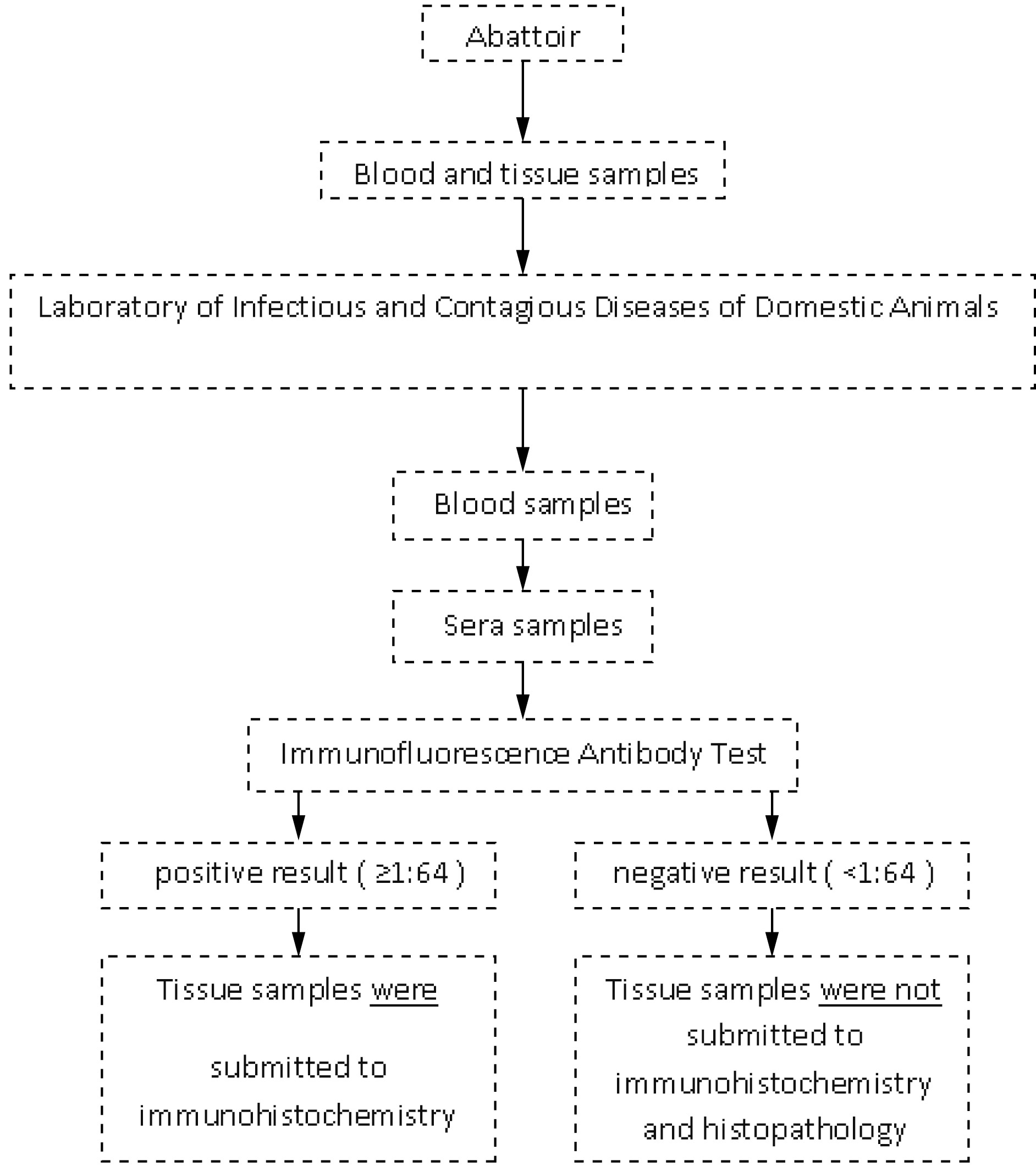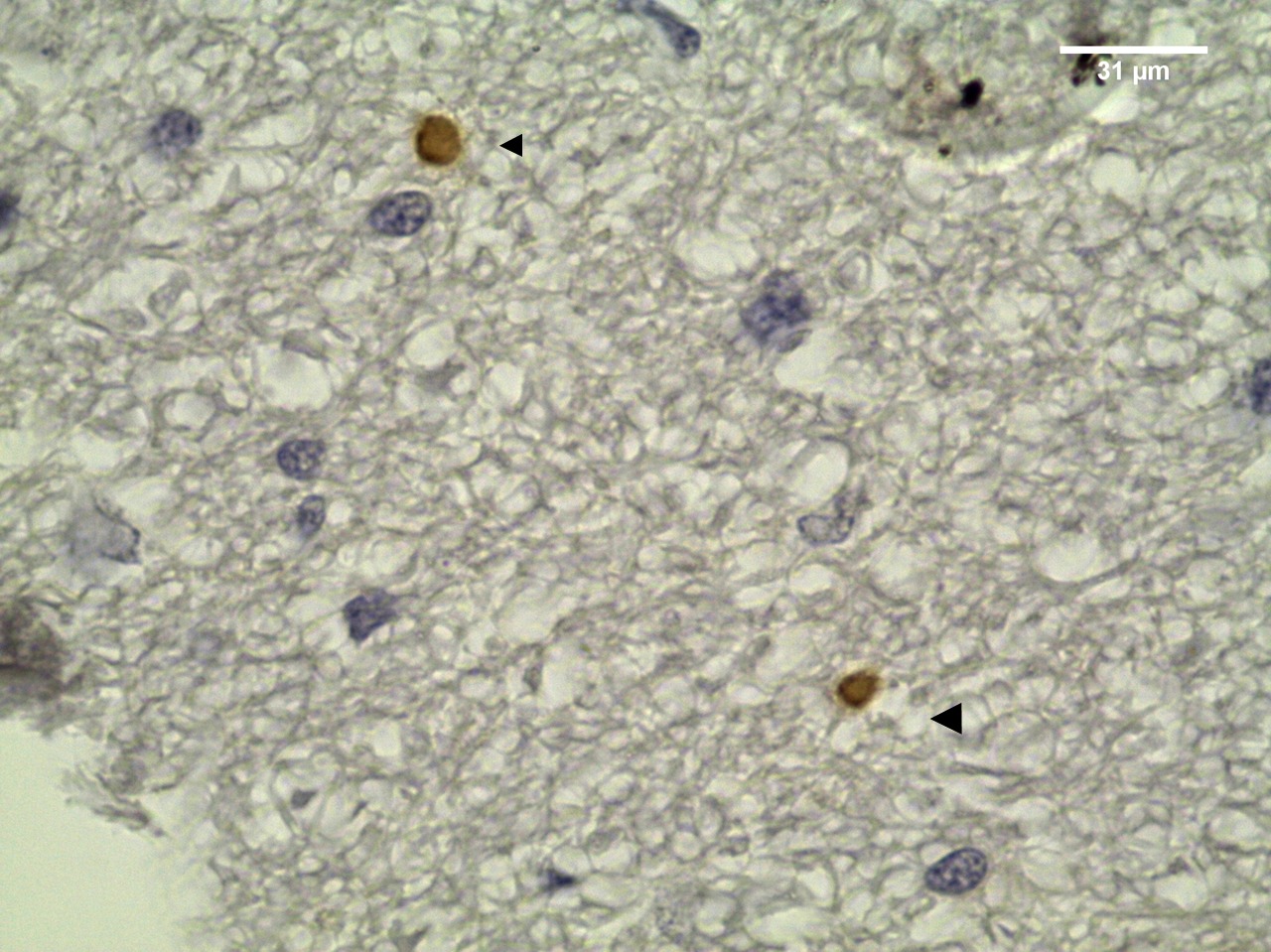Abstract
The aim of this study was to investigate occurrence of Toxoplasma gondii in sheep slaughtered in the state of Alagoas, Brazil, by means of different diagnosis techniques. Serum samples and tissues from 100 slaughtered sheep were used. To detect antibodies, the indirect immunofluorescence antibody test (IFAT) was used, and tissues from seropositive animals (cut-off ≥1:64) were submitted to Polymerase Chain Reaction (PCR) and immunohistochemistry (IHC). To assess the concordance between the direct techniques, the kappa test was used. In the IFAT, it was observed that 14% (14/100) of the ovine samples were serum-positive. In the PCR, 21.43% (3/14) of the animals were positive and in IHC, it was observed that 7.14% (1/14) were positively stained for T. gondii in cerebral tissue. Histopathologically, the predominant finding was the presence of mononuclear cell infiltrate in the heart and a perivascular cuff in the cerebrum and cerebellum. The concordance between the direct diagnosis techniques was moderate (k=0.44). Thus, it is important to use different direct techniques in diagnosing toxoplasmosis in naturally infected sheep.
Keywords:
Sheep; Toxoplasma gondii; Polymerase Chain Reaction; histopathology; immunohistochemistry

 Thumbnail
Thumbnail
 Thumbnail
Thumbnail

